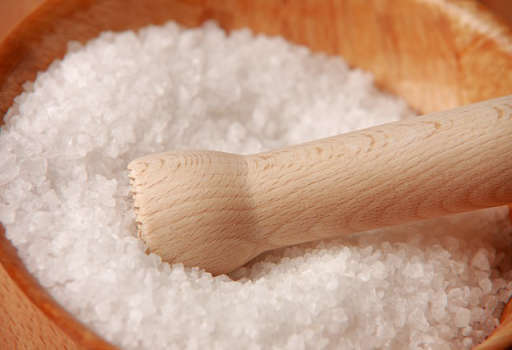Salt Health Benefits, Properties, and Uses

Scientific Name: sodium chloride
Properties: Antibacterial, Antihistamine, Anti-viral, Anti-stress, Anti-microbial, Sleep aid
What is Salt?
Common salt is a mineral primarily composed of sodium chloride (NaCl) and is an essential nutrient for human health via its role as an electrolyte and osmotic solute. In fact, salt is so important to our existence that a portion of our tongue is devoted to tasting saltiness. 1 Salt is present in vast quantities in seawater and in mineral deposits left by ancient oceans. Today, it’s processed from salt mines or by the intentional evaporation of seawater as well as from mineral-rich spring water in shallow pools.There are two distinct types of salt uses in our diet — table salt and sea salt. Sea salt comes in natural forms and contains practically all the 84 elements found in the human body. Table salt, on the other hand, is manufactured by taking natural salt and heating it to 1,200 degrees Fahrenheit.
During this process, the chemical composition is altered to being 97.5 percent sodium chloride and nearly all of the nutritional health benefits are destroyed.2 3 Although the vast majority of salt use is for industrial processes, salt uses for human consumption are for adding the saltiness taste in cooking and the value known in preservation of foods. Most processed foods contain table salt which does not have anywhere the same nutritional properties as sea salt. Table salt is much cheaper to produce in large quantities than genuine crystallized sea salt and therefore is used as an economical preservative.2 3
Salt Health Uses and Health Benefits
Salt health benefits, specifically sea salt include:3
- Contains 60 trace minerals for hydration
- Contains magnesium, a powerful electrolyte
- Helps improve adrenal, immune and thyroid function
- Improves digestion with digestive enzymes
- Sufficient sodium levels to balance your potassium-sodium ratio
These salt health benefits can be used to help treat eh following conditions:
- Canker Sores - Canker sores are the most common inflammatory conditions of the mouth and are not contagious. Known as aphthous stomatitis, they’re small ulcers on the mucous membrane and usually appear as a red lesion with a white center. The best-known treatment for canker sores is a lukewarm rinse of supersaturated salt in water.
- Herpes (Cold Sores) - Labial cold sores are caused by the herpes simplex virus (HSV-1) and are highly contagious. They normally present around the corners of the mouth as small, watery blisters and cause severe itching and pain. They normally last for days but can be easily treated by a topical application of a damp salt paste directly on the sore.
- Insect Bites - Most insect bites are not harmful but do cause discomfort in itching, throbbing, and swelling of the bitten area. The most common insect bites are from mosquitos, wasps, hornets and to a small degree, spiders. Salt is an effective pain and itch relief when topically applied by a damp paste.
- Toothache - Toothaches result from any number of causes but all come down to an irritation of the tooth nerve. An effective treatment for tooth pain relief is a rinse of warm salt water.
Salt Side Effects and Precautions
Sea salt has few side effects when taken in moderation. Table salt can be a killer. Because table salt is iodised to prevent iodine deficiency, it presents a high risk of elevating blood pressure (hypertension) and contributing to cardiovascular disease (arteriosclerosis).2 An overuse of table salt also contributes to gout, diabetes, obesity and thyroid-related autoimmune disorders.2